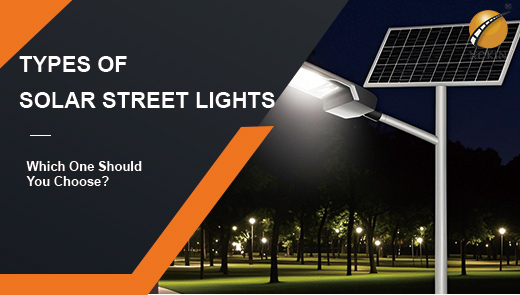How to Pick the Brightest Solar Street Lights
In the realm of solar LED street lights, the concept of lumens is crucial. It is directly related to the lighting effect of the streetlight, which in turn affects the safety and functionality of the road. So, what is the maximum lumen of a bright solar street light? How does this value influence our choice of lighting? With these questions, let us explore the mysteries of lumens and solar powered street lights. Before clarifying the relationship between lumens and brightness, it is necessary to understand lumens and lux, two key indicators of brightness.

How to define brightness? Lumens or lux?
Many people think that there is only one measure of brightness, not realizing that there are actually multiple ways to measure it. This cognitive confusion can lead to poor lighting choices. Both lumens and lux are used to measure light, and they reflect the characteristics of light from different perspectives, which is critical for planning the layout of solar lights and ensuring that the lighting design meets the actual brightness requirements.
What Are Lumens?
Lumens represent the total amount of visible light emitted by a light source in all directions and are a unit of measurement of the total light output of a light source. We have led hundreds of outdoor lighting projects over the past decade, and we always pay attention to lumens. Typically, the higher the lumen value, the brighter the overall brightness, but the distribution of brightness varies depending on the beam angle and fixture design.
For example, a 3,000-lumen lamp mounted on a high pole may not provide as much light intensity at ground level as a 2,000-lumen lamp mounted in a lower location. Additionally, in large parking lot or airport projects, we count the total lumens of multiple fixtures. For these types of large-area lighting scenarios, the total coverage luminance metric is often more important than the raw lumen values of the individual fixtures.
Definition of Lux
Lux is a measure of how many lumens of light reach a given surface area, and it reflects the intensity of light per unit area. This is especially important when one needs to know if a location is bright enough for tasks such as reading signs or walking safely. 1 lux equals 1 lumen per square meter. In practical experience, clients often focus on lumens, ignoring the impact of light distribution on actual perceived brightness.
When developing a solution, we consider both lumens and lux and offer various configurations because different areas require different lux values. A remote parking lot requires higher lux than a quiet garden path. So while lumens are the original measure of total brightness, lux helps us determine the actual intensity of light on the ground or other surface.
To show how lumens and lux compare, we use a simple table in many of our customer presentations:
|
Metrics |
What is measured |
Typical application scenarios |
|
Lumens |
Total amount of light emitted by the light source |
Overall luminous output of the luminaire |
|
Lux |
Intensity of light per unit area |
Perceived brightness of surfaces such as floors, walls, etc |
This table helps customers understand why we mention both metrics. Once they understand how light travels and is distributed, they understand that lighting design is not just about aiming for the highest number of lumens but also about skillfully arranging luminaires to achieve the best possible lighting effect.
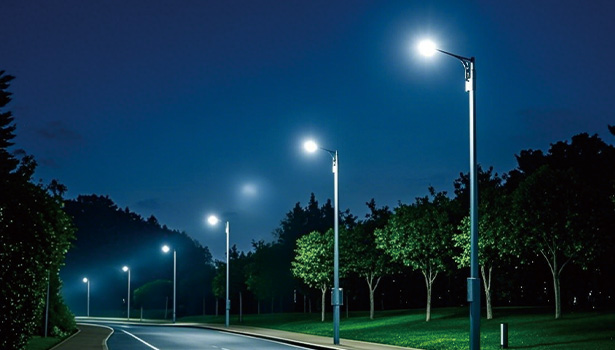
Understanding Lumen and Brightness in Solar Lights
Residential Solar Lights
Residential solar lights typically range from 100 to 1,000 lumens. This level of brightness is ideal for patios, gardens, and small driveways. They provide warm and moderate lighting for outdoor spaces in the home.
Commercial Solar Lights
For larger areas like parking lots, solar lights typically have a lumen output of 7,400 to 22,200 lumens. These lights are high-intensity LED lights that meet the lighting needs of areas with high pedestrian and vehicular activity.
High-Performance Solar Floodlights
Solar lights for safety and security and large space lighting are the brightest. They typically require more than 14,400 lumens. Some advanced models can reach 44,400 lumens or more, making them ideal for lighting stadiums or large outdoor event venues.
Do more lumens make for brighter lights?
The answer is yes. Lights with a higher lumen count are inevitably brighter than lights with a lower lumen count. Lumens are a reflection of a bulb's lighting performance, not its energy consumption. And a high lumen count does not necessarily mean a higher wattage is needed.
To determine how bright a light is and how much energy it uses, we need to consider both wattage and lumens. Lower wattage paired with higher lumens means that the bulb is more energy efficient, saving energy while meeting lighting needs.
While these considerations are important for indoor lighting, they are equally critical for the lighting needs of large areas such as parking lots, parks, stadiums, and roadways. The more light a space requires, the higher lumen value we need to look for when purchasing solar powered led street lights.
Can You Have Too Many Lumens?
When planning our streetlight needs, we need to understand how many lumens will produce the required brightness. While more lumens make the light brighter, too many lumens do exist.
For example, the sun emits millions of lumens, which is why we cannot look directly at the sun without damaging our eyes. Obviously, it is impossible for man-made lamps to achieve such high levels of brightness. The headlights of a car usually have about 3,000 lumens, and even then, it is not comfortable to look directly into them.
It is true that technically, the lumen count of streetlights may be too high. However, manufacturers do not produce high-lumen streetlights that can cause harm, and streetlights are designed to be customized for specific areas and usage scenarios.
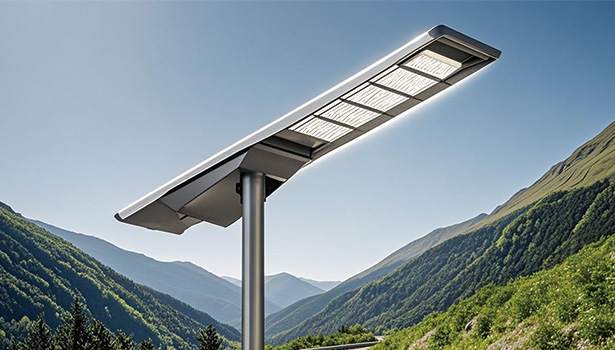
What Are the Factors that Determine the Lumen Value of Solar Lights?
Many consumers want their solar lights to be as bright as possible while also trying to keep costs down. Focusing only on the advertised lumen count may overlook factors that affect actual performance.
The efficiency of the LEDs, the state of the batteries, and the setup of the solar power system all affect the actual lumen output. Even if two lights are labeled with the same number of lumens, their actual performance can vary greatly due to these technical details.
LED Efficiency
The efficiency of an LED is critical and is often measured in lumens per watt (lm/W). If an LED chip is more efficient, it will be able to produce more light with the same power consumption. The efficiency of LED chips varies from manufacturer to manufacturer, with some chips reaching up to 180 lm/W and others only 130 lm/W or less. The difference is significant. Over the years, the technology has advanced, and whereas in the early days, a 100 lm/W LED chip was considered a good performer, nowadays efficiencies in excess of 200 lm/W can be achieved in laboratory conditions with better quality chips.
When designing or recommending solar lighting solutions for our customers, we often compare different LED chips. We make it clear to our customers that higher efficiency LEDs can reduce the power requirements of the entire system. This means that smaller solar panels or batteries can be used, reducing costs. At the same time, the brand reputation of the LED chips varies. Higher-end chips are more stable, dissipate heat better, and last longer. Here is a simple comparison table:
|
LED Chip |
Efficiency Lumens per Watt |
Typical Use |
|
Standard |
100 - 120 |
Basic Home Lighting |
|
High Efficiency |
150 - 180 |
Street Lighting Projects |
|
Top |
180+ |
Professional Applications |
Many customers are willing to invest in better LED chips once they realize the differences. They realize that while the initial cost of a high-efficiency chip is higher, it saves money in the long run because smaller batteries and solar panels can be used without sacrificing brightness.
Percentage of Battery Storage Power
Batteries do not always remain fully charged. As the battery level drops, so may the output of the LEDs. In practice, solar controllers often have a power-saving mode. When the battery voltage drops to a lower level, Power Saver mode kicks in and the controller reduces the power of the LEDs to fully utilize the remaining power. This results in a decrease in the lumen output of the luminaire. In addition, as the battery is depleted, its internal resistance increases, reducing the output power available to the LEDs.
There was an early project to install solar powered street lights in a rural area. The battery capacity was only enough to keep the light on for one night. However, the customer noticed that after a few hours the brightness of the streetlight decreased. This was because the controller reduced the power of the LEDs when the battery power fell below a certain level. This is a design strategy to ensure that the streetlight does not go out completely. If the battery capacity is too low, the lumen output of the streetlight may drop significantly at night. We will consider the local weather conditions and daily lighting needs to determine the appropriate battery power margin to avoid the streetlight dimming too quickly.
Solar panel power, battery capacity, solar controller type
In the long run, solar lights need a stable power input, which comes from the solar panels, which charge the batteries. If the solar panels are able to provide more power per day, the batteries will fill up faster. Larger solar panels keep the batteries at a higher percentage of charge, which means the light will stay closer to its maximum lumen output throughout the night. For large-scale installations, we carefully calculate the battery capacity needed. A larger capacity battery can store more energy on nights with low sunlight. Combined with the right solar panels, this ensures that the luminaire remains bright.
The solar controller is also a key component. We typically choose MPPT (Maximum Power Point Tracking) controllers because of their higher charging efficiency compared to simple PWM (Pulse Width Modulation) controllers, which are able to adapt to voltage variations more efficiently and maximize the energy harvested from the solar panels, helping to keep the batteries healthy and fully charged. MPPT systems charge up to 30% faster than PWM systems under the same conditions. This advantage is especially important in cloudy weather or when sunlight hours are short.
When developing a solution, we ask about the local climate, how long the streetlights need to run, and how bright they need to be. These needs are then matched with the right solar panel power, battery capacity, and controller type. This customization is critical. We understand that standard solutions may not work in areas with high rainfall or long winter nights. By matching solar panel size, reliable batteries, and MPPT controllers, we can ensure that the streetlight maintains a consistent lumen output throughout the night.
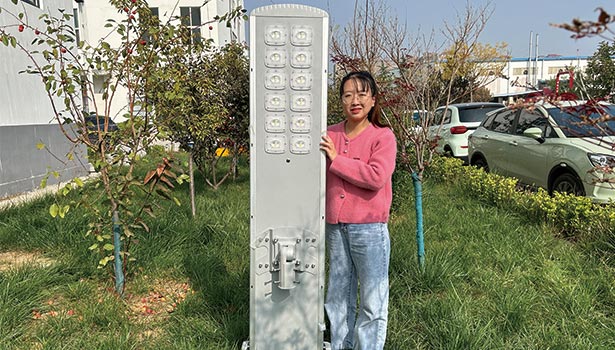
How Many Lumens Do You Need for Solar Street Lights?
Streetlights typically range from 600 to 12,000 lumens. 12,000 lumens is extremely bright and is best suited for large areas that require high-intensity lighting. City planners may also use multiple fixtures in an area for brighter lighting.
Lumen counts for LED lights may range from 120 to 180 lumens for lamp posts and up to 700 lumens for motion sensor lights. LED floodlights typically require higher lumen counts, typically up to 1300 lumens. When planning to light larger areas, higher lumen solar street lights are needed. Highways and busy roads may require 6,000 to 12,000 lumens, while residential streets require about 5,000 lumens.
Factors that determine streetlight lumen needs include:
Type of streetlight bulb: LED, metal halide, high pressure sodium, low pressure sodium, narrow band amber, incandescent, fluorescent, etc.
Size of the space to be illuminated.
Distance of that space from other light sources.
The number of hours per day the space needs to be illuminated.
The number of streetlights required.
The type of streetlight pole used.
With solar led street lights, we can enjoy bright lighting while significantly reducing costs and maintenance efforts. In fact, over a 10-year time span, solar lights are 45% cheaper than other light fixtures because they save us money on energy and installation costs.
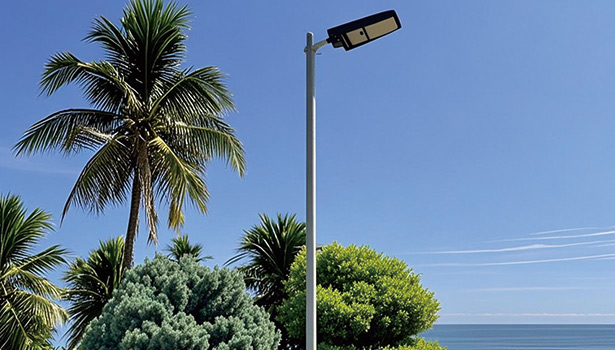
To summarize, lumens play a central role in the field of solar powered street lighting. We have not only understood the definition of lumens and its relationship with brightness but also explored the lumen requirements for different application scenarios of sustainable solar street lights, as well as the various factors affecting lumen values.
When choosing a sustainable solar street light, it is crucial to consider these factors comprehensively. Can not just focus on the lumen value of the high and low but also need to combine the actual use of the scene, lighting needs, and a variety of technical parameters to make the most appropriate decision. We hope that the introduction of this article can help you in the solar led street lighting project, making a wiser, more scientific choice to create both an efficient and economical lighting environment.


